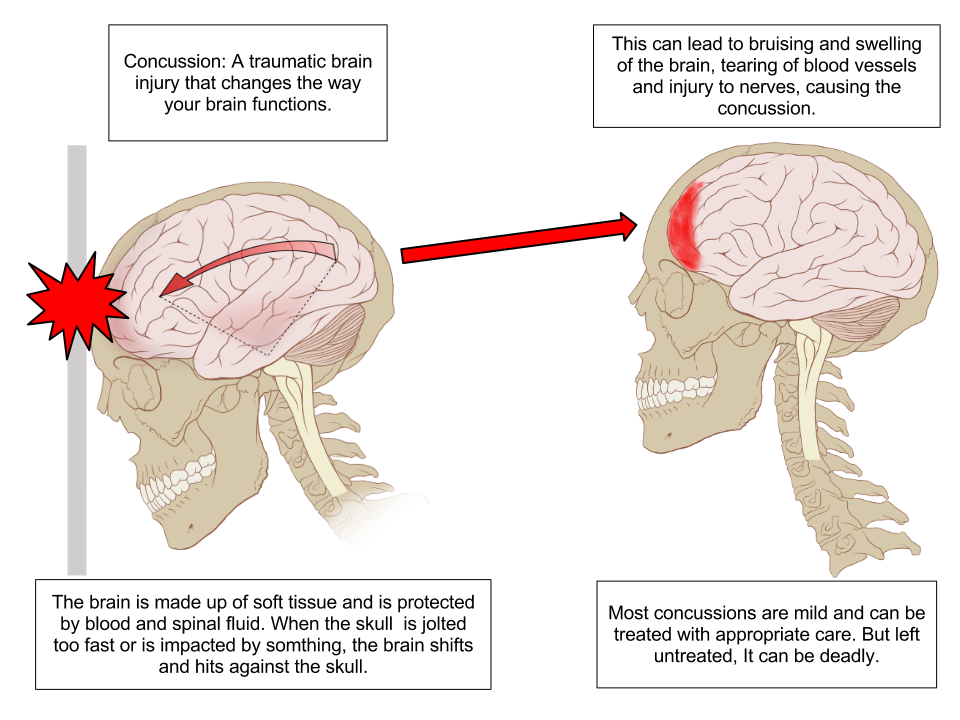
Concussions are a direct result of Newton’s Laws of Motion. The bone of the skull itself is relatively strong, therefore it can handle large forces that give large acceleration to the skull, as described by Newton's Second Law of Motion. However, the brain is surrounded by cerebral-spinal fluid inside the skull and thus when the skull accelerates the brain tends to continue its original motion, (Newton's First Law of Motion). Aside from some slowing due to drag within the fluid, the brain will then strike the hard inside surface of the skull at nearly full speed and come to rest, or even bounce and change direction, over a very small time interval. This massive acceleration on the brain coincides with a force on the brain that is much greater than brain tissue can handle, causing a brain injury. In simple terms, just because the skull can handle an impact, that doesn’t mean the brain can.
- Concussion Anatomy by Max Andrews - Own work. This file was derived from: Concussion mechanics.svg, CC BY-SA 3.0, https://commons.wikimedia.org/w/index.php?curid=19490504 ↵

